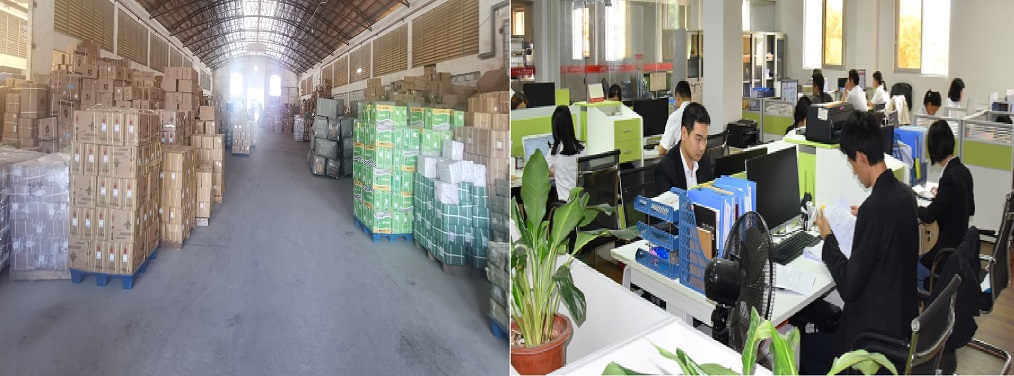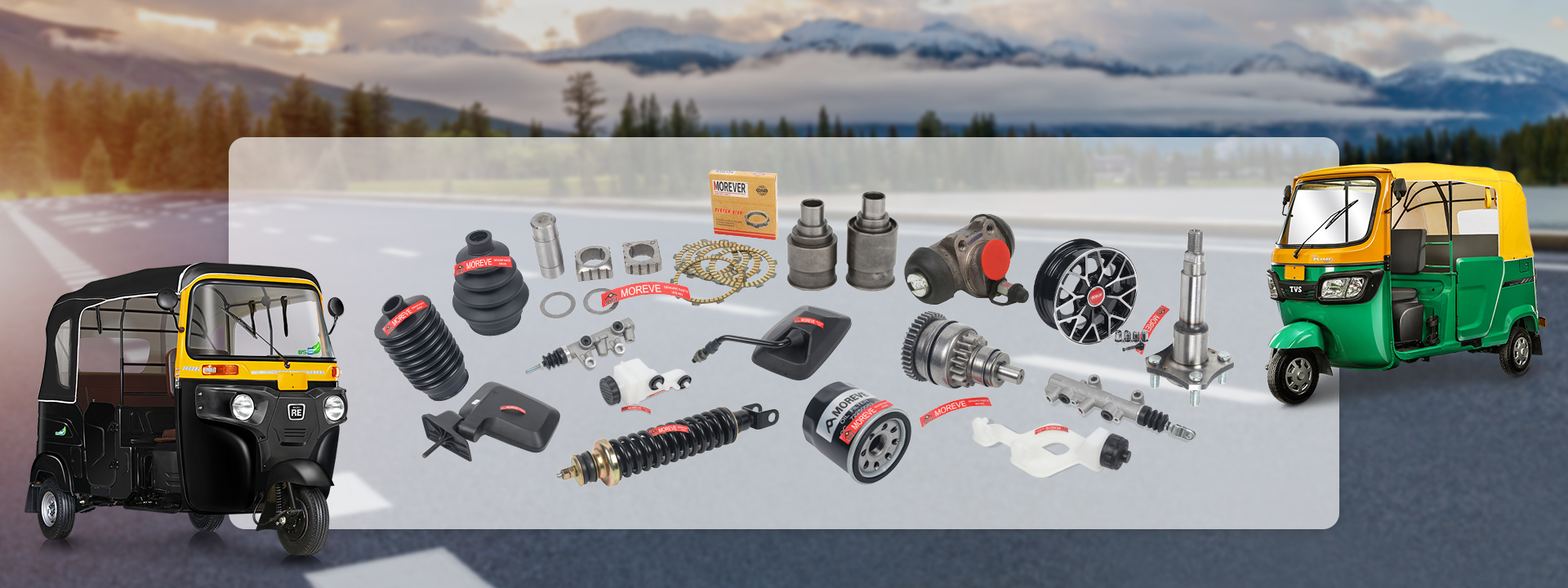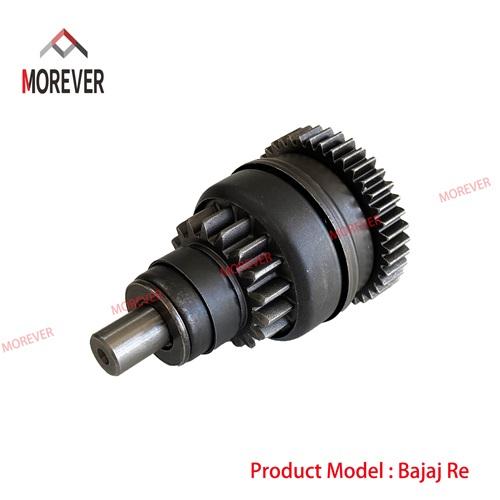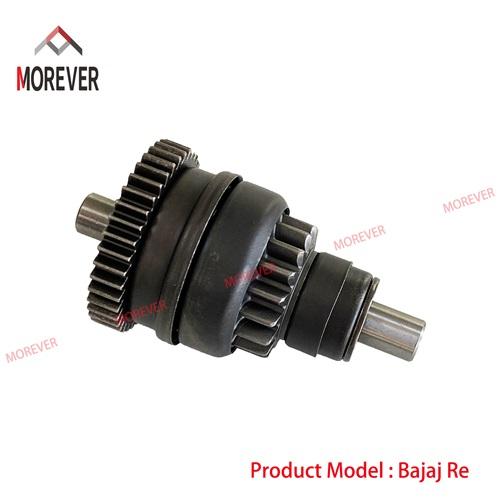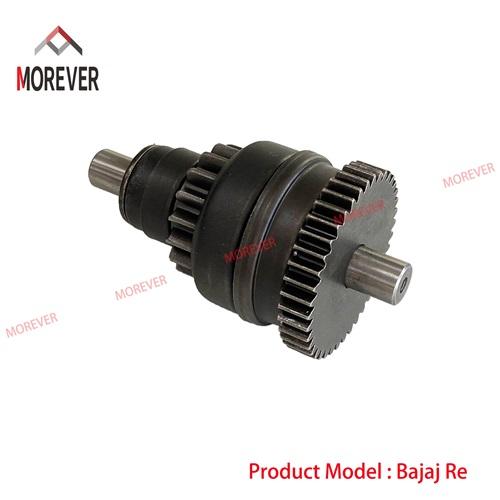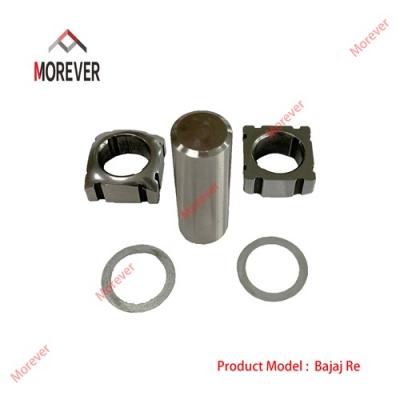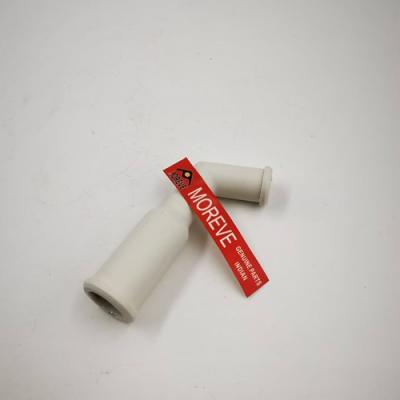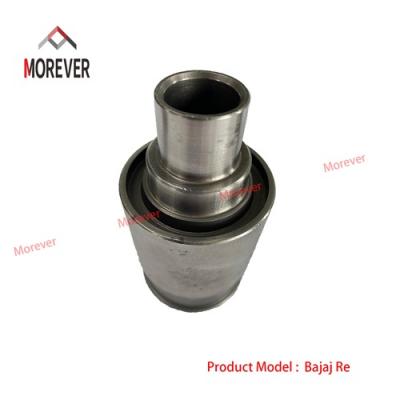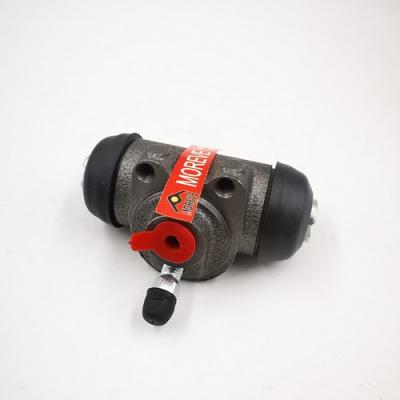BENDIX/STARTER DRIVE Bajaj Re BS-4/BS-6
Model: Bajaj Re
Brand: Morever
Material: perfect heat treatment process Ordinary steel
Days of Delivery: 30 days
Quality: A+ grade
Guarantee: 3 months after fixing
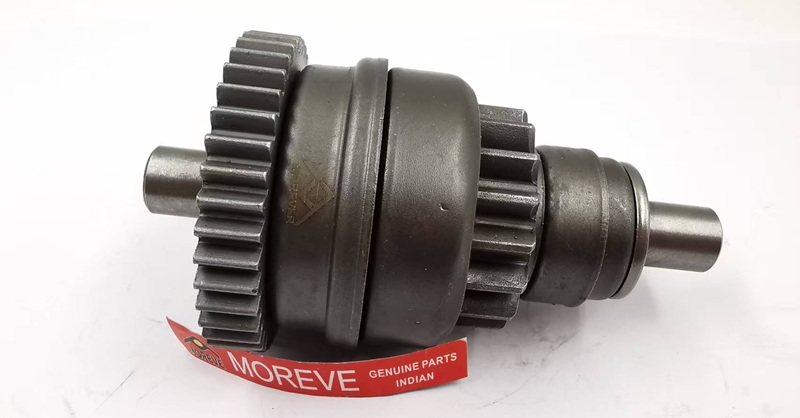
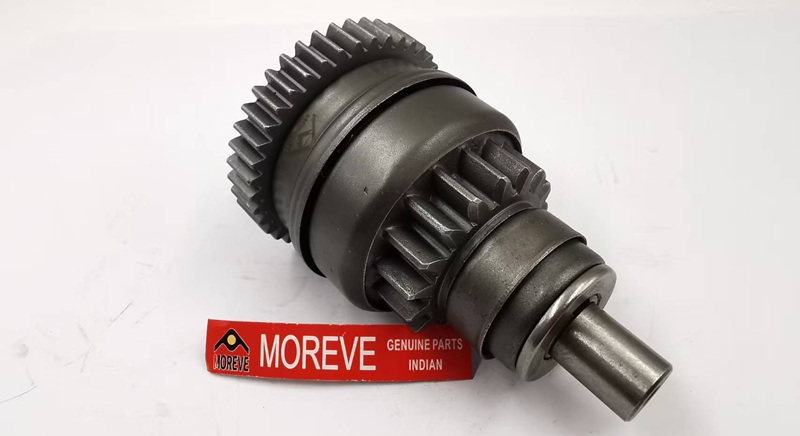
Main components of Bajaj Re Bendix
1. The driving gear end, i.e. the outer ring, is usually integrated with the starting gear and meshes with the engine flywheel gear ring. It is generally made of alloy steel, and the surface is carburized and quenched to improve wear resistance.
2. The motor shaft connection end, the inner ring, is connected to the rotor shaft through a spline or spiral spline. It is generally made of high-strength steel to ensure high reliability of torque transmission.
3. Roller/wedge structure (one-way locking mechanism)
The roller-type one-way clutch uses multiple cylindrical rollers plus a spring structure to achieve one-way locking by an inclined surface. Its main advantages are simple structure and low cost, and it is widely used in ordinary models.
Working principle of the one-way clutch
When starting, the starter motor is energized, the motor shaft pushes the drive gear to mesh with the flywheel through the helical spline, the roller/wedge is locked, and the torque is transmitted; after the engine is started, the flywheel speed exceeds the drive gear, the roller/wedge is unlocked, and the "overrunning" function is realized to protect the starter motor.
How to check the quality of Bajaj Re bendix
1. Appearance inspection
(1) Gear and housing: Check whether the tooth surface of the driving gear is smooth or has broken teeth, wear or cracks (the high-frequency quenching layer should be intact). Observe whether the outer shell is deformed, rusted or has processing burrs (poor casting process of inferior products). Check whether there are marks such as brand, model, production batch number, etc.
(2) Sealing inspection: Check whether the dust cover is intact and whether the sealing ring (if any) has good elasticity and no aging cracks.
2. Manual function test.
The first is a one-way locking test. The clutch should be locked when rotating clockwise (simulating the motor driving direction) and should be overrun when rotating counterclockwise (simulating the engine reverse drag direction). That is, the gear can idle freely without sticking. If both directions are locked and the internal roller/wedge is stuck, it needs to be replaced.
The second is an axial sliding test (with helical spline type). Manually push and pull the driving gear to check whether it can slide smoothly on the shaft (inferior products may be stuck due to low processing accuracy).
3. Torque test
Fix the inner ring of the one-way device (one end connected to the motor shaft), apply the rated torque to the drive gear to observe whether it slips. If it can withstand the set torque without slipping, it is a qualified product. If slipping occurs, it is an unqualified product (internal wear or spring fatigue).
4. Durability simulation test
High-speed no-load test, install the one-way device on the motor and run it no-load for 5~10 minutes (simulating the overrunning state after starting), and check whether there is heating, abnormal noise or jamming.
6.Load cycle test, the method is to repeatedly start the motor 50~100 times to detect whether the locking function is stable. If it is a low-quality product, it is prone to early failure.
Quality and process comparison
|
Key points |
High-quality products |
Low-quality products |
|
Material |
Alloy steel, perfect heat treatment process Ordinary steel |
insufficient hardness |
|
locking force |
Stable torque transmission, no slipping |
Easy to slip or get stuck |
|
sealing |
Dust cover is tight, oil-resistant rubber Poor sealing |
easy to get dust |
|
Brand and logo |
Brand LOGO clear |
No logo or blurry |
Disassemble and inspect faulty parts
Check whether the roller/wedge block is worn, indented or broken (the surface should be smooth and without peeling). Observe whether the spring is deformed or elastic (maintain the roller/wedge block compression force). Check whether the bearing and bushing rotate smoothly and whether there is excessive wear.
Common failure points
The first is one-way slippage, roller/wedge wear or spring failure, resulting in idling at start-up. The second is jamming, dust ingress or poor lubrication, resulting in failure to automatically separate (abnormal noise after start-up). The third is gear wear, tooth cracking or sharpening, and poor meshing. Maintenance suggestions are mainly to regularly check the working status of the starter motor, avoid long-term continuous starting, and choose products that meet quality standards when replacing.
Distributor comments
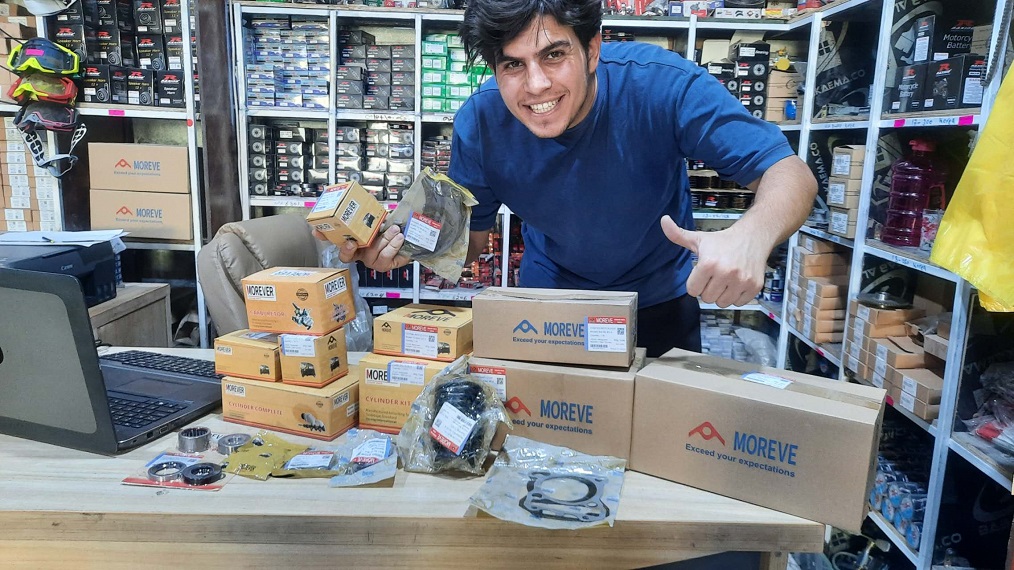
Our Warehouse and Office
